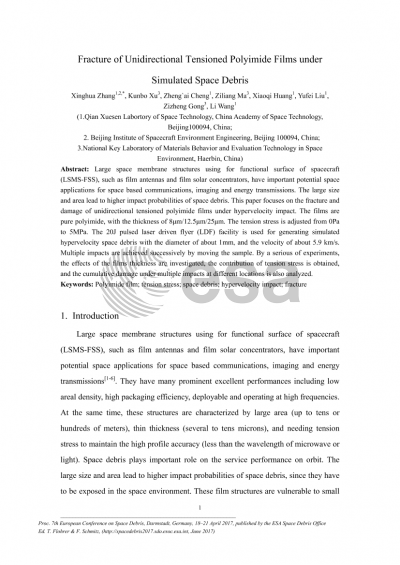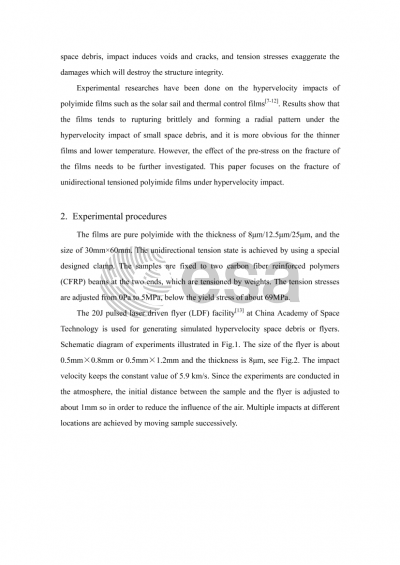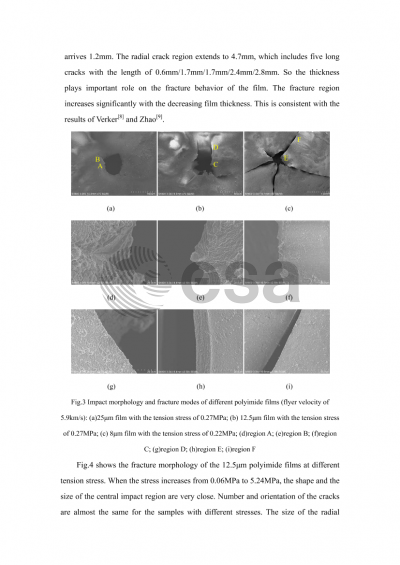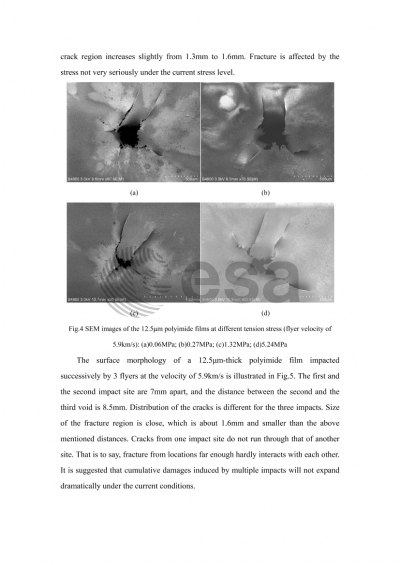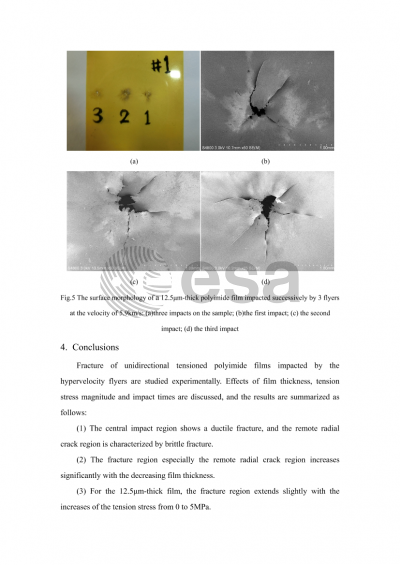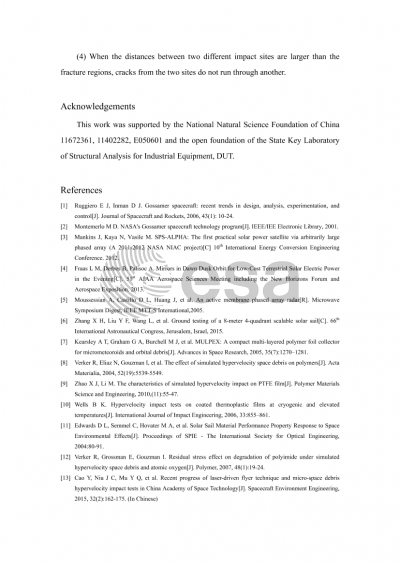Document details

Abstract
Large space membrane structures using for functional surface of spacecraft (LSMS-FSS), such as film antennas and film solar concentrators, have important potential space applications for space based communications, imaging and energy transmissions. They have many prominent excellent performances including low areal density, high packaging efficiency, deployable and operating at high frequencies. At the same time, these structures are characterized by large area (up to tens or hundreds of meters), thin thickness (several to tens microns), and needing tension stress to maintain the high profile accuracy (less than the wavelength of microwave or light). Space debris plays important role on the service performance on orbit. The large size and area lead to higher impact probabilities of space debris, since they have to be exposed in the space environment. These film structures are vulnerable to small space debris, impact induces voids and cracks, and tension stresses exaggerate the damages which will destroy the structure integrity.
Experimental researches have been done on the hypervelocity impacts of polyimide films such as the solar sail and thermal control films. Results show that the films tends to rupturing brittlely and forming a radial pattern under the hypervelocity impact of small space debris, and it is more obvious for the thinner films and lower temperature. However, the effect of the pre-stress or tension stress on the fracture of the films need to be further investigated.
This paper focused on the fracture and damage of unidirectional tensioned polyimide films under hypervelocity impact. The films are pure polyimide and aluminum coated polyimide, with the thickness ranging from 8?m to 25?m, and the size of about 25mm×50mm. A special clamp was designed to apply the tension stress, where the films are fixed to two carbon fiber reinforced polymers (CFRP) beams at the two ends, and the beams is tensioned by springs and weights, finally the tension stress was adjusted from 0Pa to 10MPa, below the yield stress. The 20J pulsed laser driven flyer (LDF) facility at China Academy of Space Technology was used for generating simulated hypervelocity space debris with the diameter of about 1mm, thickness ranging from 3?m to 8?m which is smaller or close to that of the films, and velocities from 3km/s to 10km/s. Different impact locations and multiple impacts were achieved by changing the optical path of the incident laser beams. The morphology of fractured surfaces due to the hypervelocity impacts was examined using a laser confocal microscope and an optical microscope. By a serious of experiments, the contribution of tension stress was obtained, and the effects of the films and flyers thickness and the velocity of the small space debris were investigated, finally, and the cumulative damage and the through crack under multiple impacts at different locations were also analyzed.
Preview
